Biochem Study Set: Gluconeogenesis & Ketogenesis Terms
1/32
There's no tags or description
Looks like no tags are added yet.
Name | Mastery | Learn | Test | Matching | Spaced |
|---|
No study sessions yet.
33 Terms
Lecture Objectives
1. Describe how glucose is synthesized through gluconeogenesis and identify where in the cellgluconeogenesis occurs.
2. Explain why glycolysis cannot simply 'run in reverse' to synthesize glucose.
3. Describe the reactions in gluconeogenesis which bypass the 3 irreversible steps of glycolysis tosynthesize glucose.
4. Explain how the reactions of gluconeogenesis allow the cell to synthesize glucose under energeticallyunfavorable conditions.
5. Describe the reciprocal regulation of glycolysis and gluconeogenesis in terms of the allostericregulator fructose-2,6-bisphosphate (F 2,6-BP)
6. Describe why and where ketone bodies form, and how ketone bodies are used as fuel by extrahepatictissues, such as the brain.
After 24 hours of fasting, most liver glycogen is depleted. Where do cells get glucose?
Gluconeogenesis and glycogen breakdown
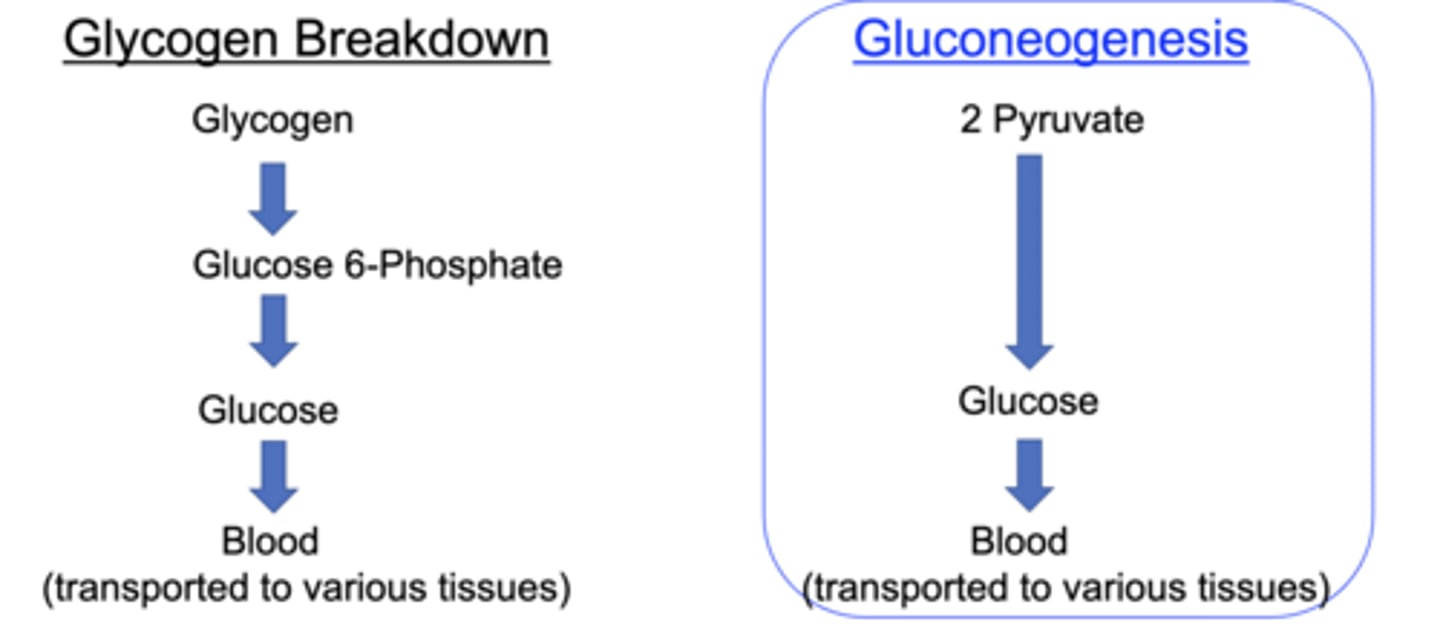
What barrier prevents glycolysis from simply running in reverse to synthesize glucose?
The reverse of glycolysis is highly endergonic under cellular conditions. (3 glycolysis reactions are essentially irreversible)
Gluconeogenesis
-pathway that converts pyruvate and related three- and four-carbon compounds to glucose
-mainly occurs in the LIVER in mammals
-in photo: A,B, and C are starting material
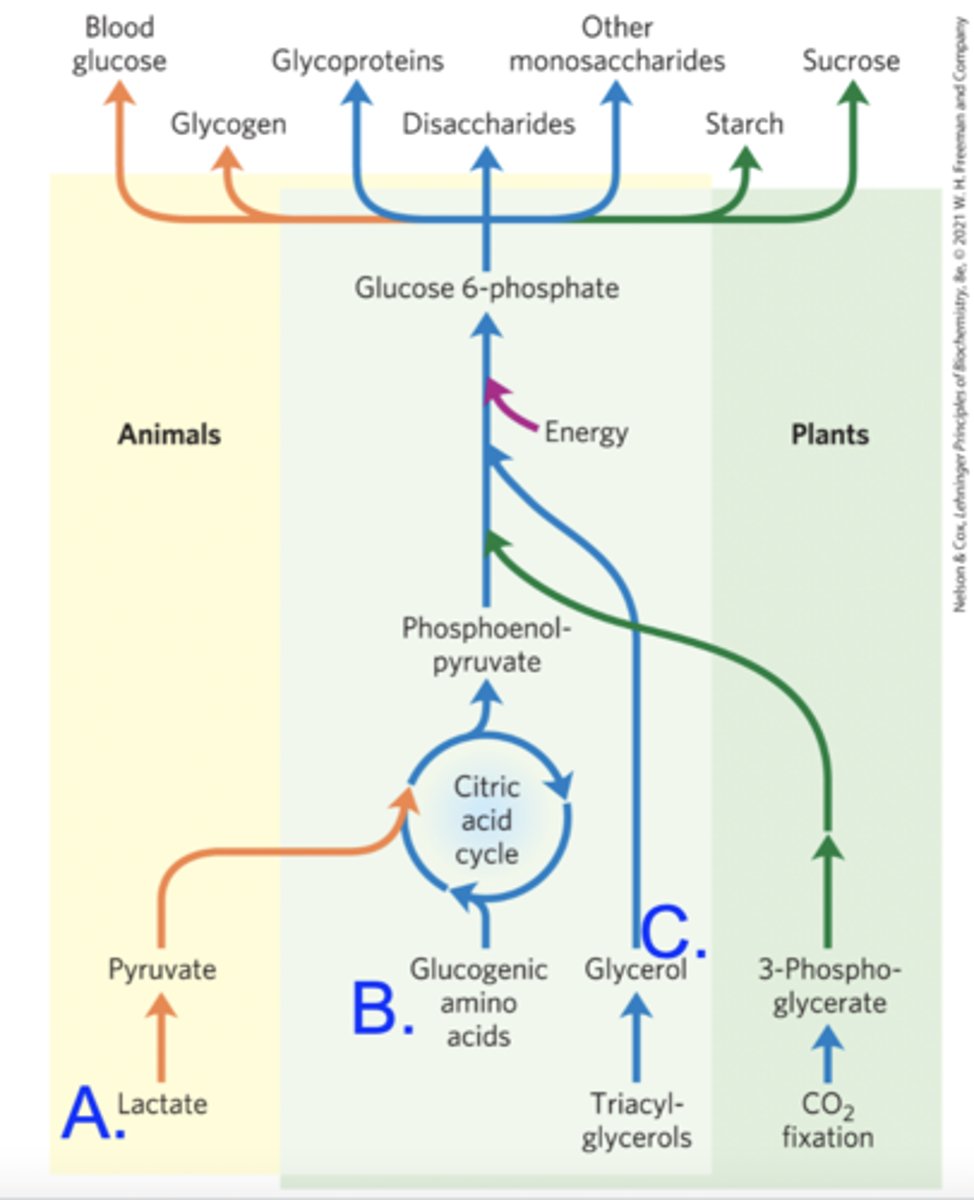
Staring Material A: Glucose formed in the liver can be from muscle-derived lactate.
-Lactate is produced by muscle during anaerobic respiration
-Liver cells remove lactate from blood and convert it into glucose (Cori cycle)
-Liver synthesized glucose can be returned to muscles to be used again or converted into glycogen
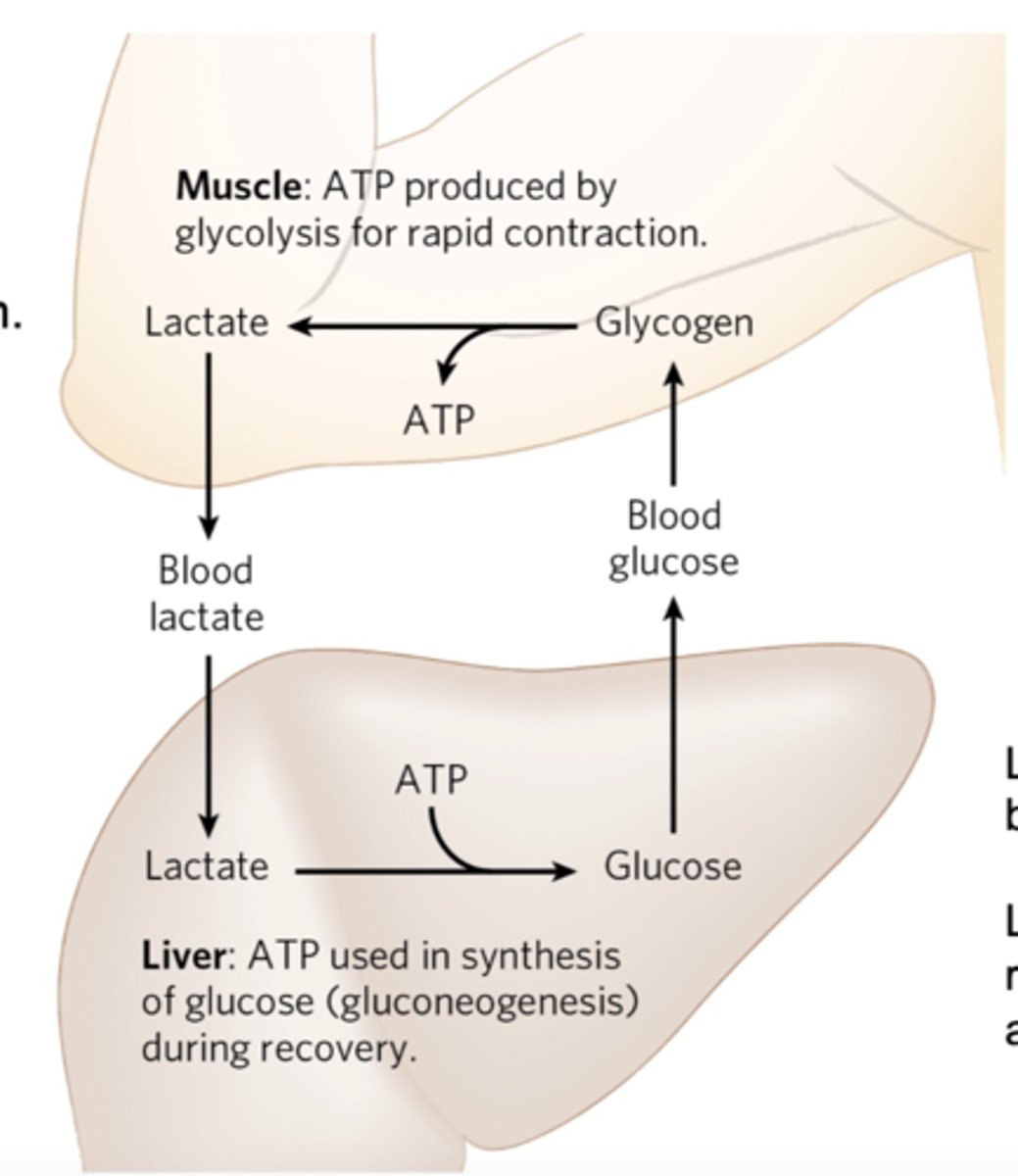
Staring Material B: The carbon skeletons of some amino acids can be converted into glucogenic intermediates
-Every amino acid, EXCEPT leucine and lysine can be glucogenic
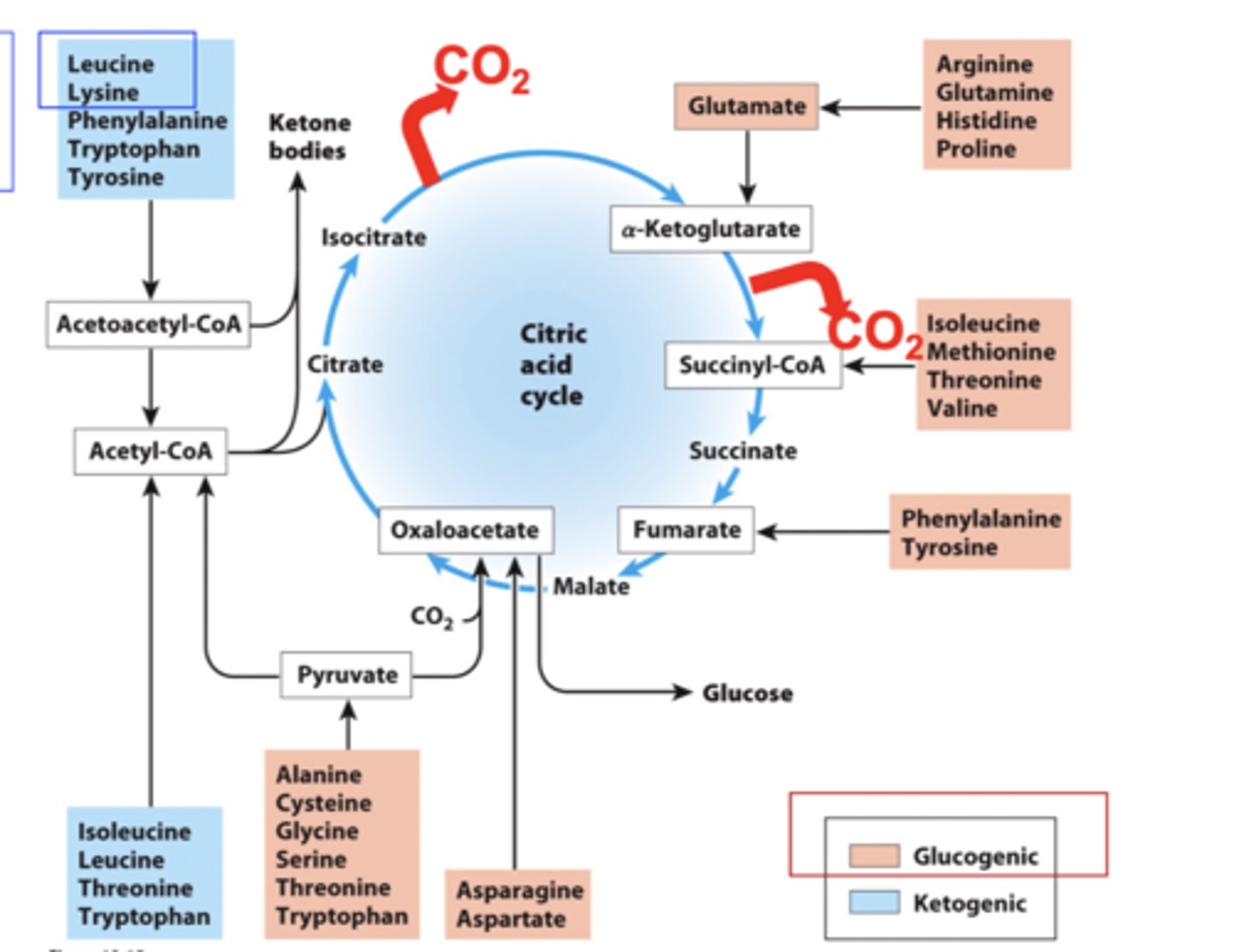
Starting Material C: Glycerol (derived from triacylglycerol) can serve as starting material for gluconeogenesis
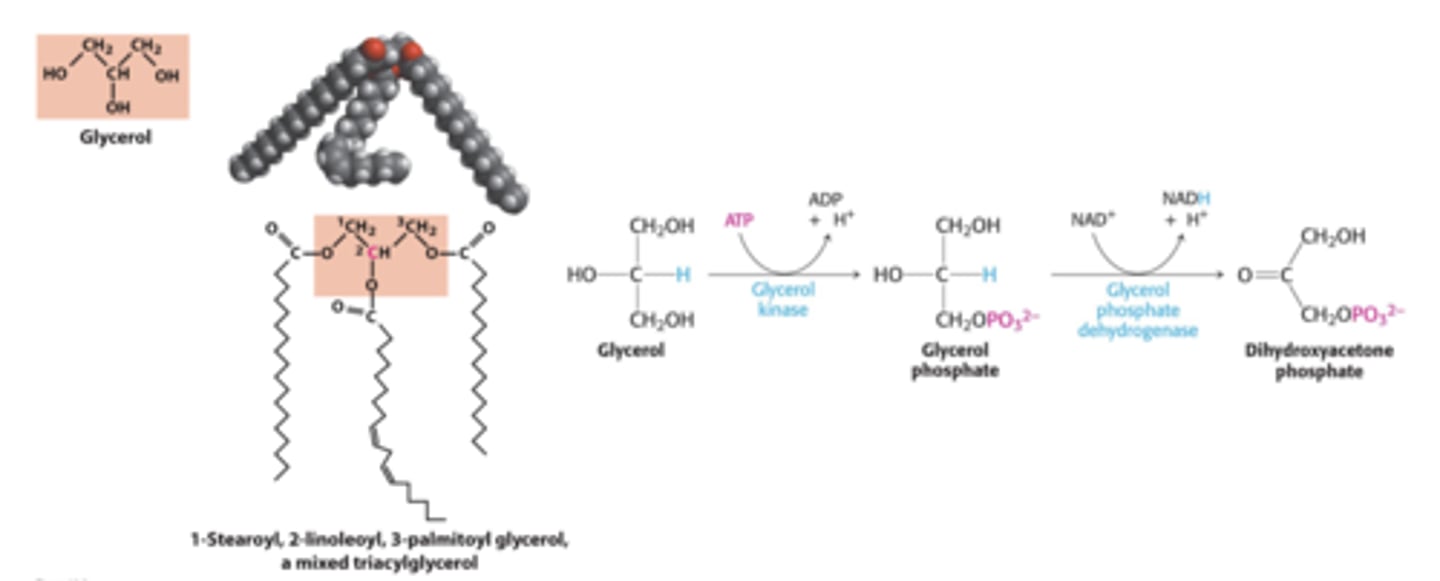
Bypass Reactions in Gluconeogenesis
refers to the bypass of irreversible glycolytic reactions
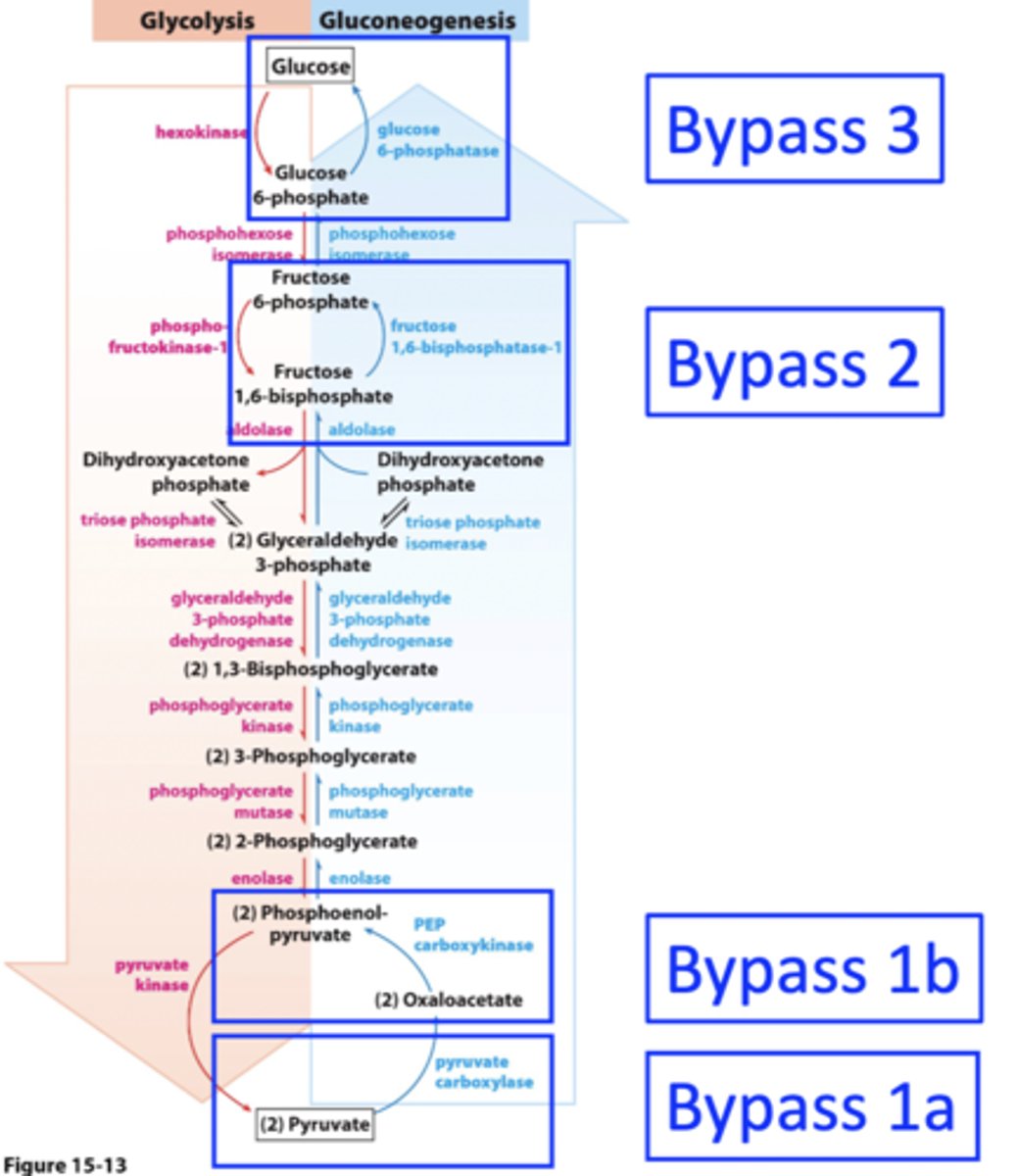
3 irreversible steps in glycolysis must be bypassed in gluconeogenesis by using energy
-glycolysis net gain: 2 NADH, and 2 ATP
-gluconeogenesis energy cost: 2 NADH, 4 ATP, 2 GTP
How is this energetic barrier overcome in gluconeogenesis?
The expenditure of six NTP molecules renders gluconeogenesis exergonic
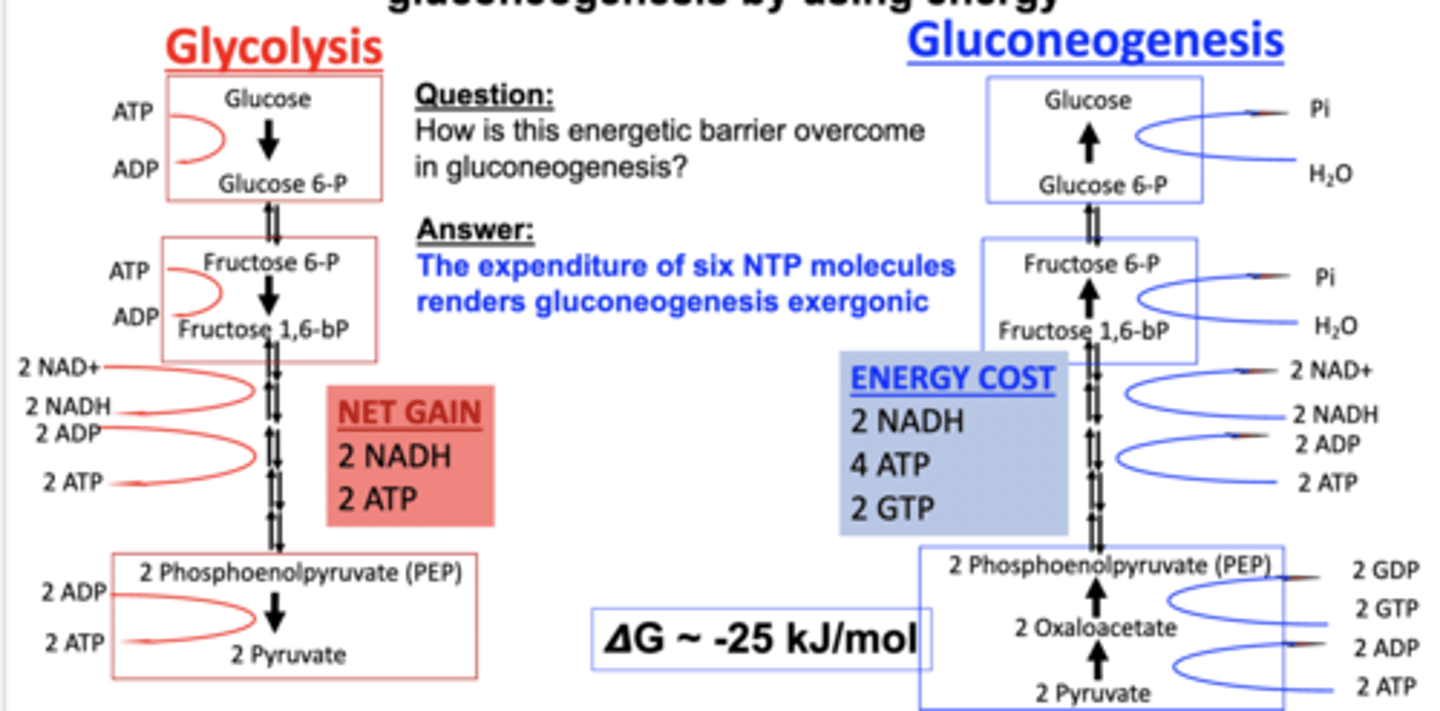
Conversion of pyruvate into PEP
takes two steps

Bypass 1A: pyruvate to oxaloacetate inside mitochondria
-begins with the formation of oxaloacetate inside the mitochondria
-biotin is a required cofactor for carboxylase enzymes

Oxaloacetate (OAA) is shuttled into the cytoplasm as malate
-oxaloacetate is reduced to malate bc the mitochondrial membrane does not have an oxaloacetate transporter
-oxidation of malate to oxaloacetate forms NADH in cytoplasm
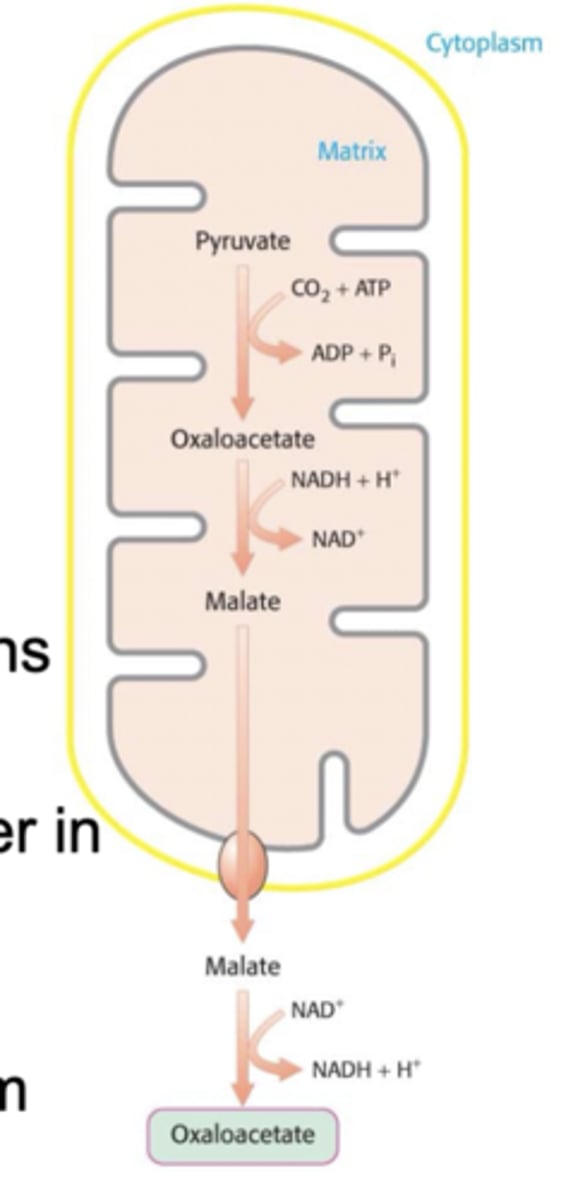
Why is the generation of cytoplasmic NADH important?
NADH is required in one of the reversible reactions.
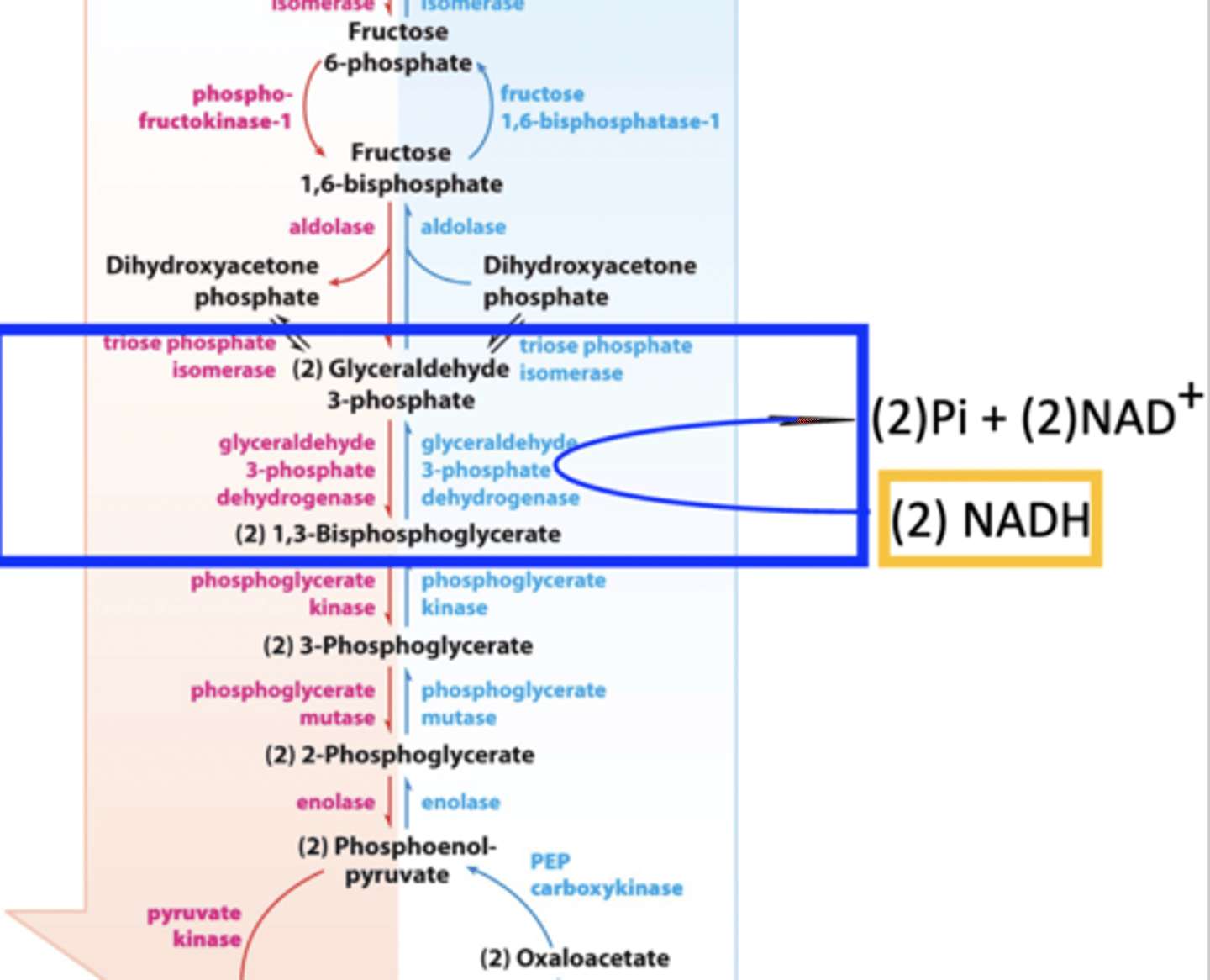
Bypass 1b: OAA is converted to PEP
-GTP in, GDP and CO2 out

Bypass reactions 2 and 3
H2O in Pi out
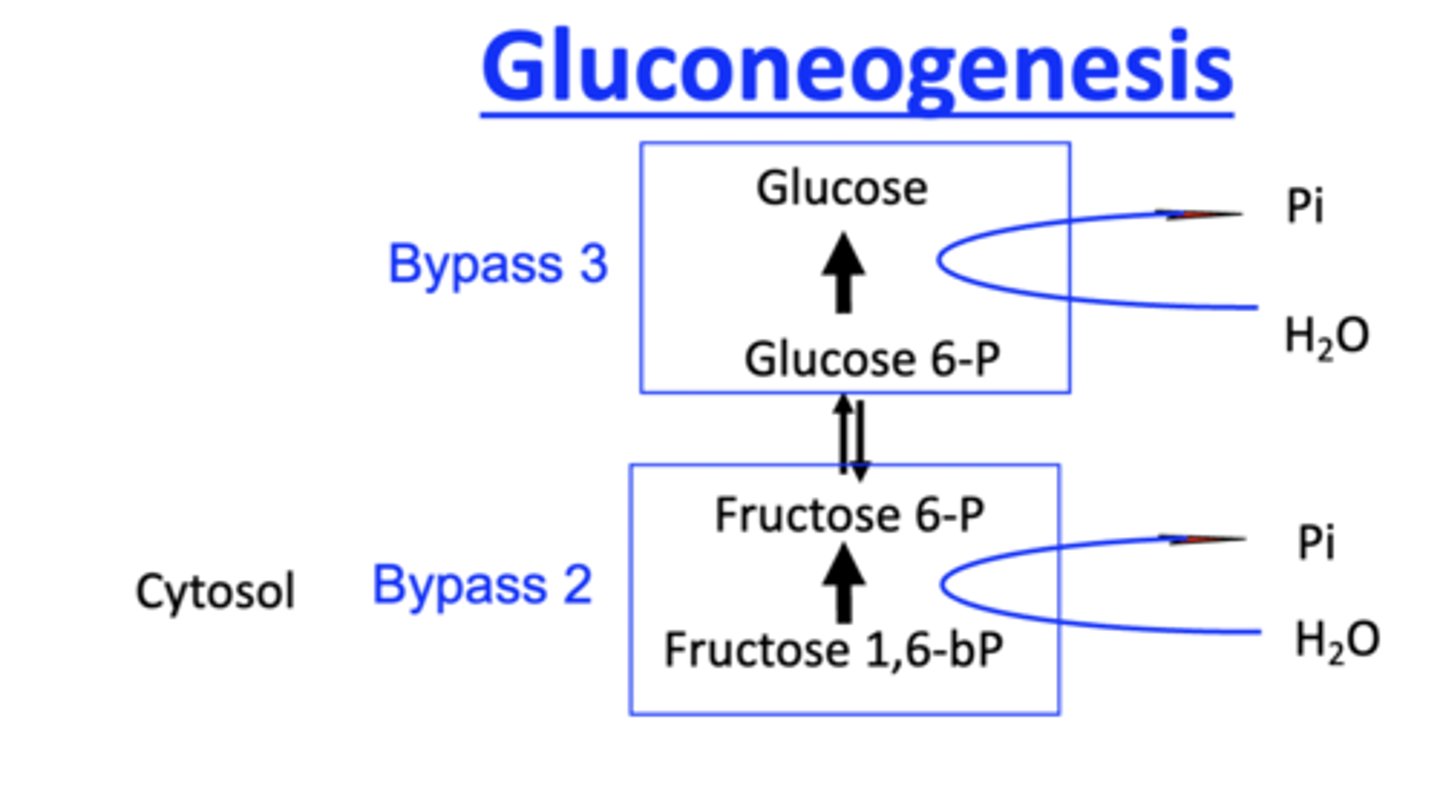
Common theme: Rxns far from equilibrium are common points of regulation
-key enzymes operate far from equilibrium (the three irreversible steps in glycolysis)
-these key enzymes operating far from equilibrium are highly regulated
Where are the enzymes catalyzing the irreversible reactions of glycolysis and glyconeogenesis regulated?
within the cell
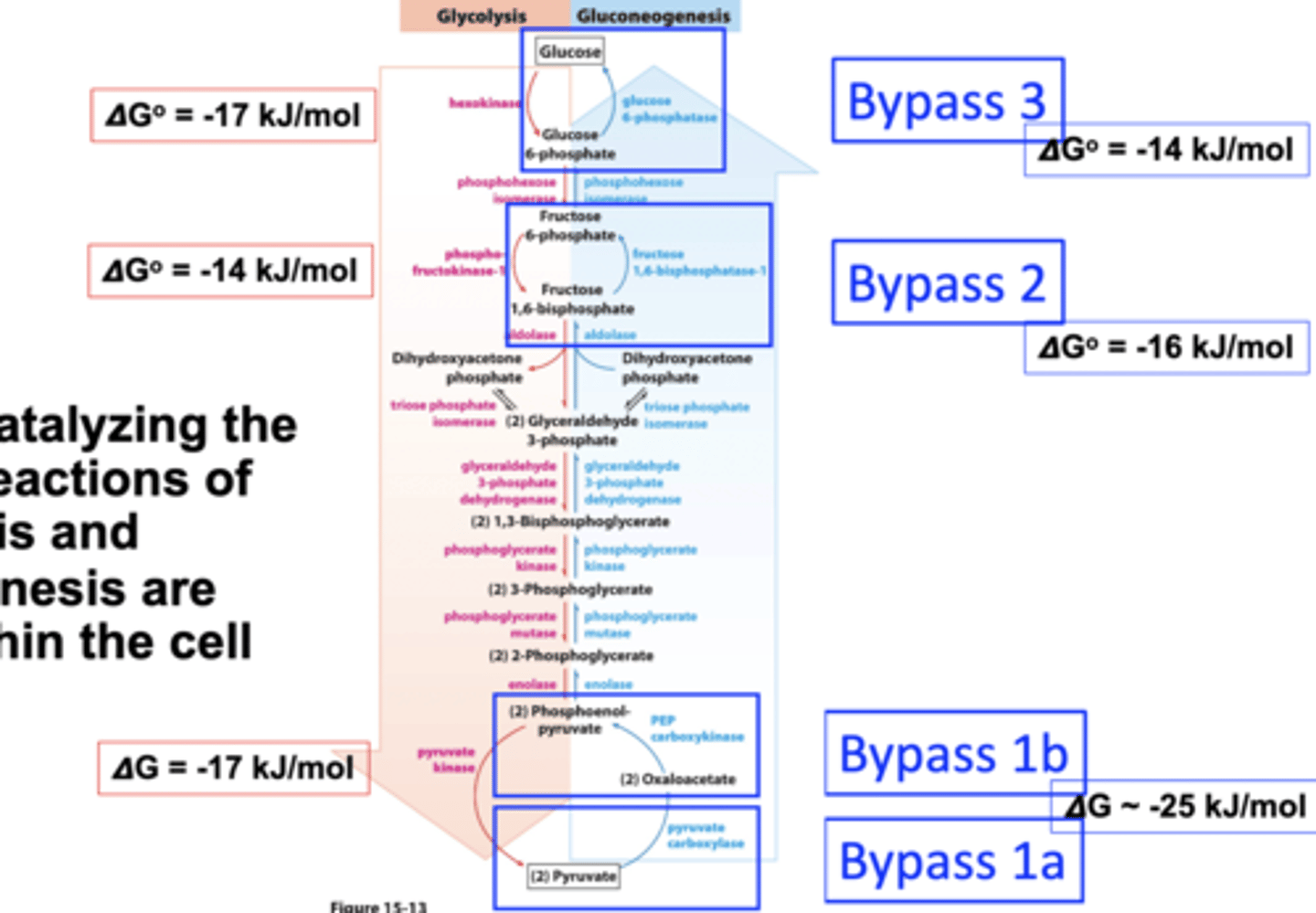
Gluconeogenesis and glycolysis are reciprocally regulated
rationale: glycolysis will predominate when glucose is abundant
gluconeogenesis will be highly active when glucose is scarce
Two enzymes discussed
PKF-1 and FBPase-1
PFK-1
catalyzing the conversion of Fructose 6-phosphate to Fructose 1,6-Bisphosphate
FBPase-1
catalyzing Fructose 1,6-Bisphosphate to Fructose 6-phosphate
Fructose 2,6-bisphosphate
an allosteric effector that helps regulate glucose metabolism
-stimulates glycolysis and inhibits gluconeogenesis
-the main determinant of which pathway is active

If glucagon signaling results in activation of gluconeogenesis, does the cell need to synthesize Fructose 2,6-BP or remove it?
Remove it
Fuel molecules during starvation
After several days of fasting, ketone bodies become the major fuel source for the brain. Fatty acids cannot cross the blood-brain barrier.
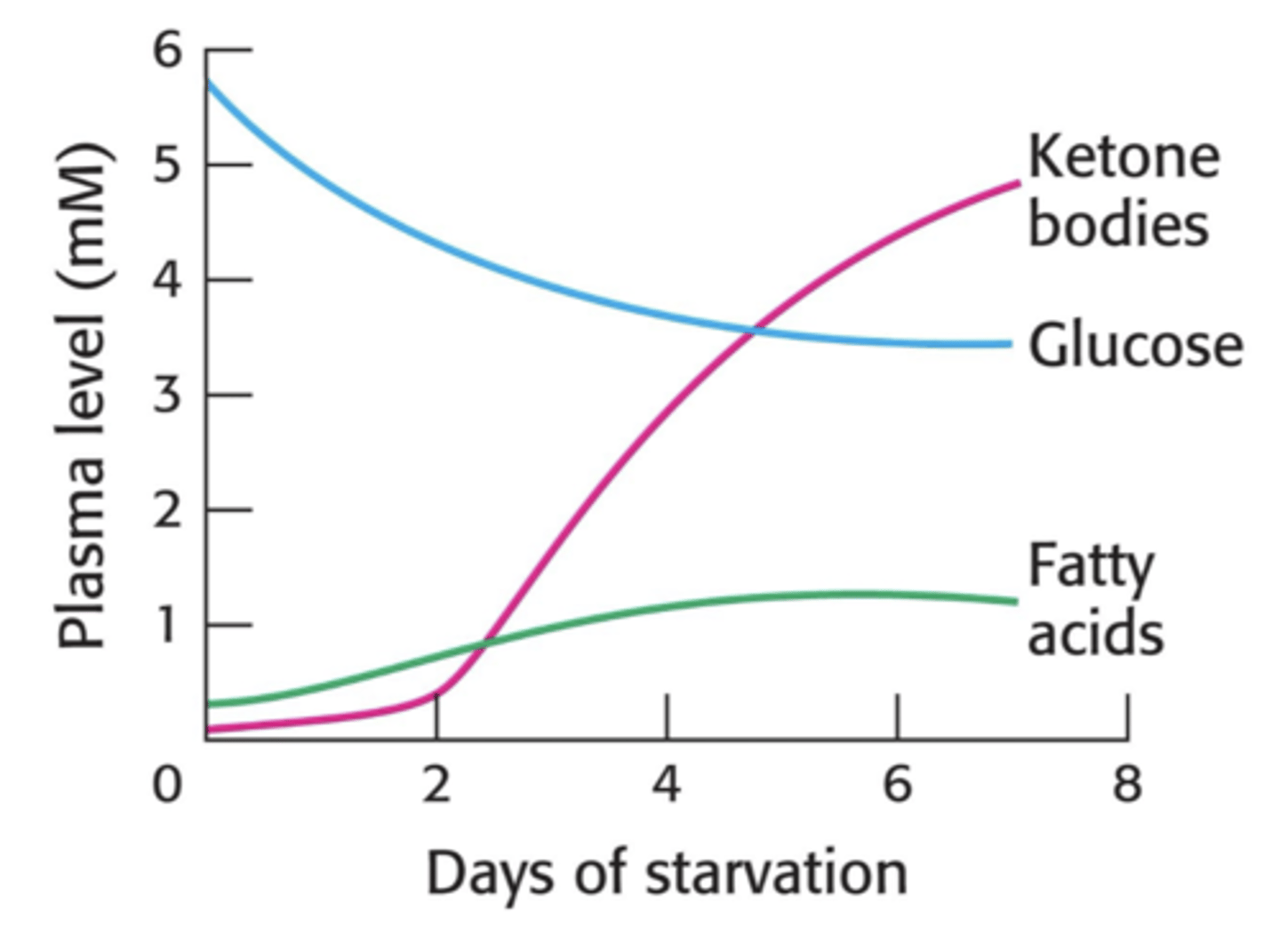
Ketone bodies are a crucial fuel source during starvation
-glucose is the predominant fuel for the brain
-level of ketones rises dramatically after 2 to 4 days of fasting and use of ketone bodies slows the pathway of protein degradation preventing tissue failure
Acetoacetate and beta-hydroxybutyrate
water-soluble ketones, supplement glucose as an energy source as they enter the brain where they are oxidized for energy
Acetone
a minor ketone body, is not metabolized but is eliminated in the breath
Ketogenesis: synthesis of ketone bodies
when oxaloacetate is depleted via gluconeogenesis, 3 acetyl-CoA are converted into a ketone
-coenzyme A released during formation of ketones is used for continued beta oxidation of fatty acids

Liver mitochondria: the source of ketone bodies
-during fasting, liver uses fatty acids as fuel molecules to generate ATP
-fatty acids come from TAG in adipocytes
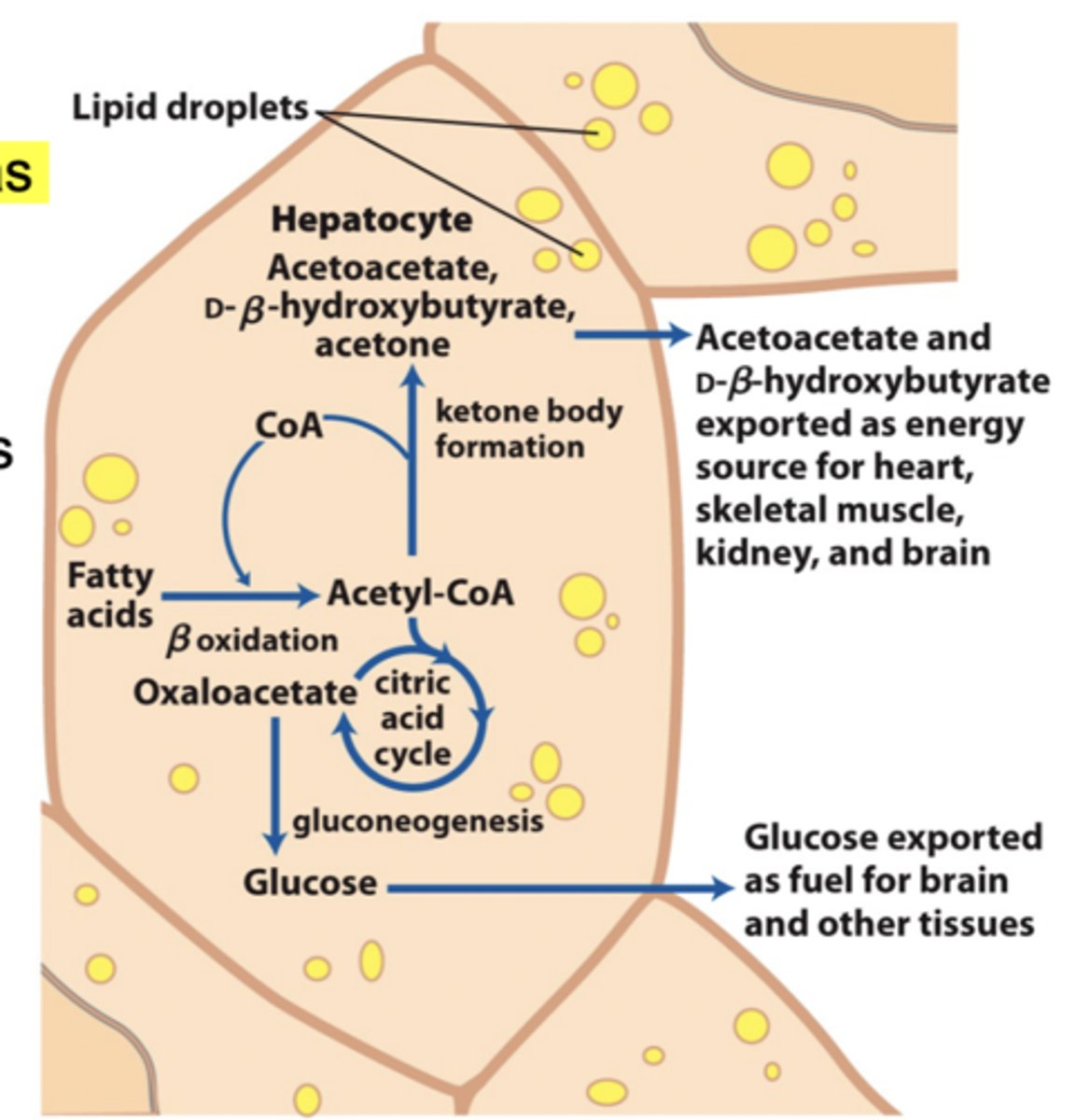
Does fasting slow or quicken CAC as oxaloacetate is used in gluconeogenesis
slows
Build of acetyl-CoA
allows conversion of acetyl-CoA to ketone bodies
For each molecule of beta-hydroxybutyrate, how many NADH and FADH2 are produced in the brain?
7 NADH and 2 FADH2